Posté par Sébastien Bontemps, le 13 octobre 2015;
- Date limite : 1er décembre 2015
- Date et lieu : 19 février 2016, Paris, INHA, salle Vasari
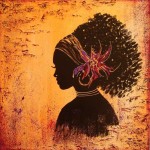 Couleur x Afrique Institut national d’histoire de l’art (INHA), Paris, France, 19 février 2016 Couleur x Afrique Institut national d’histoire de l’art (INHA), Paris, France, 19 février 2016
Couleur x Afrique. Fabrique et utilisation, perception et dénomination
Journée d’étude Salle Vasari, INHA Appel à contribution
Les recherches sur la couleur ont été marquées par le débat des années 1960-1970 qui a opposé, sur le terrain africain, les tenants de la classification de l’évolution des langues en fonction des noms de couleurs, et ceux qui montraient la diversité de la perception et de la catégorisation des couleurs dans les populations classées comme primitives par les premiers. Cela montrait et montre encore aujourd’hui combien ce thème est un révélateur de questions sociales sur la perception de soi-même et des autres. Récemment ont émergé de nouvelles recherches . . . → En lire plus
Posté par Sébastien Bontemps, le 14 septembre 2015;
- Date limite : 5 janvier 2016
- Date et lieu : 29 avril 2016, Université de Bourgogne Franche-Comté
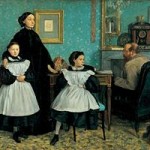 Appel à Communication Les Beaux-arts et les critiques : Légitimer le statu quo et l’ordre social, 29 avril 2016, Université de Bourgogne Franche-Comté Appel à Communication Les Beaux-arts et les critiques : Légitimer le statu quo et l’ordre social, 29 avril 2016, Université de Bourgogne Franche-Comté
En 1899, Thorstein Veblen développe aux Etats-Unis le concept de la « consommation ostentatoire » dans son ouvrage Théorie de la classe de loisir. Il y explique comment l’art peut être étudié comme un produit social dont la consommation révèle des marqueurs sociaux, des interactions sociales au sein de la classe dirigeante, ainsi que des processus de stratification sociale. En sociologie, il s’agit d’une des premières fois où la relation entre les beaux-arts et la classe dirigeante fut mise en avant. Au vingtième siècle, de nombreux sociologues ont continué à montrer ces liens, comme par exemple Digby . . . → En lire plus
Posté par Sébastien Bontemps, le 13 septembre 2015;
- Date limite : 1er octobre 2015
- Date et lieu : 26-27 novembre 2015, Jacobs University Bremen
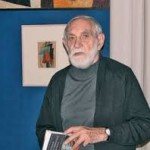 Russian Art: Bridges Between East & West (Bremen, 26-27 Nov 15) Department of Humanities and Social Sciences, Research IV, Campus Ring 1, Jacobs University Bremen, November 26 – 27, 2015 Deadline: Oct 1, 2015 Russian Art: Bridges Between East & West (Bremen, 26-27 Nov 15) Department of Humanities and Social Sciences, Research IV, Campus Ring 1, Jacobs University Bremen, November 26 – 27, 2015 Deadline: Oct 1, 2015
“Russian Art: Building Bridges Between East and West In Memoriam Dmitry Sarabyanov” Russian Art and Culture Group – Third Graduate Workshop Guest Speaker: Dr Rosalind Polly Blakesley MA DPhil, University of Cambridge
Language: English
Dmitry Sarabyanov (1923–2013), long-time head of the Department of Russian Art History at Moscow State University, was among the first scholars in the USSR to reconsider the so-called “formalist” artists, who had been denounced for ideological reasons, thus marking a turn in postwar Soviet thinking about Russian art. The third graduate workshop . . . → En lire plus
Posté par Sébastien Bontemps, le 13 septembre 2015;
- Date et lieu : 17-18 septembre 2015, Naples, Antisala dei Baroni, Castel Nuovo
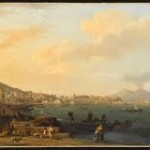 Nature & the Arts in Early Modern Naples (Naples, 17-18 Sep 15) Antisala dei Baroni, Castel Nuovo, Napoli, September 17 – 18, 2015 Nature and the Arts in Early Modern Naples Ars e natura nella Napoli moderna International Conference Nature & the Arts in Early Modern Naples (Naples, 17-18 Sep 15) Antisala dei Baroni, Castel Nuovo, Napoli, September 17 – 18, 2015 Nature and the Arts in Early Modern Naples Ars e natura nella Napoli moderna International Conference
From Iacopo Sannazaro’s lyric evocation of the Campania landscape in his Arcadia to Giambattista Vico’s attempts to anchor human civilisation in man’s existential confrontation with the forces of nature, the literary, visual and scientific culture of early modern Naples is deeply grounded in the city’s natural environment. Ever since Jacob Burckhardt wrote dismissively of «das prunkliebende Neapel», the city’s culture has been characterised as both derivative and excessive. Foregoing such evaluations, this interdisciplinary conference sets out to develop an alternative account. . . . → En lire plus
Posté par Olivier Bonfait, le 4 septembre 2015;
- Date limite : 31 octobre 2015, 31 octobre 2015
Images as Agents. Iconic Political Practices in Historical and Global Cultures Place: Kesselhaus, Muthesius Art and Design School, Kiel, Germany Date: January 28-30, 2016
Concept and Organization: Prof. Dr. Christiane Kruse, Muthesius Art and Design School, Kiel, Germany Prof. Dr. Birgit Mersmann, Jacobs University Bremen, Germany/University of Basel, Eikones, Switzerland
 In global visual cultures, images become increasingly charged with political and religious messages. This happens not only for provoking personal emotions, public debates, and new ideologies, but also for triggering a call to action. Images function as political and cultural agents on a global level of interaction with far-reaching consequences for society. The “Cartoon Dispute” caused by . . . → En lire plus In global visual cultures, images become increasingly charged with political and religious messages. This happens not only for provoking personal emotions, public debates, and new ideologies, but also for triggering a call to action. Images function as political and cultural agents on a global level of interaction with far-reaching consequences for society. The “Cartoon Dispute” caused by . . . → En lire plus
Posté par Olivier Bonfait, le 4 septembre 2015;
- Date limite : 1er mai 2016
Colloque international : Littératures et arts du vide. Cerisy-la-Salle, été 2017. Co-organisateurs : Pierre Taminiaux (Georgetown University), Jérôme Duwa (IMEC). 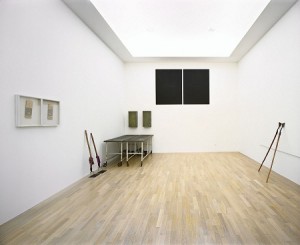 Ce colloque se propose d’explorer les diverses représentations du vide dans la création littéraire (fiction, poésie, théâtre, essai) et artistique (peinture, sculpture, dessin, photographie, installation) du XXe et du XXIe siècle. Le vide reflète avant tout un parti-pris esthétique de dépouillement et d’épure des formes. Mais Il débouche aussi dans de nombreux cas sur l’expression d’une crise, sinon d’une fin de l’art dans la culture occidentale, comme l’a prouvé le mouvement Fluxus dans les années soixante et soixante-dix. Au-delà de ces principes formels et de ces tensions philosophiques, . . . → En lire plus Ce colloque se propose d’explorer les diverses représentations du vide dans la création littéraire (fiction, poésie, théâtre, essai) et artistique (peinture, sculpture, dessin, photographie, installation) du XXe et du XXIe siècle. Le vide reflète avant tout un parti-pris esthétique de dépouillement et d’épure des formes. Mais Il débouche aussi dans de nombreux cas sur l’expression d’une crise, sinon d’une fin de l’art dans la culture occidentale, comme l’a prouvé le mouvement Fluxus dans les années soixante et soixante-dix. Au-delà de ces principes formels et de ces tensions philosophiques, . . . → En lire plus
Posté par Olivier Bonfait, le 29 juillet 2015;
- Date limite : 15 septembre 2015, 15 septembre 2015
CALL FOR PAPERS: ”Life and/as Art in the Eighteenth Century”, Noémie Etienne (Getty Research Institute) and Meredith Martin (New York University), American Society for Eighteenth-Century Studies Annual Conference, Pittsburgh, March 31-April 3.
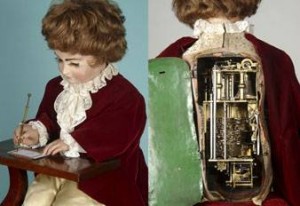 During the eighteenth century, a whole series of artistic productions aimed to simulate motion and life, at the same time that individuals became ever more preoccupied with performing or embodying static works of art. This session aims to explore such hybrid creations and the boundaries they challenged between animate and inanimate form, art and technology, the living and the dead. Papers may focus on specific objects, such as the automata created by the clockmaker Pierre-Jacques Droz that imitated . . . → En lire plus During the eighteenth century, a whole series of artistic productions aimed to simulate motion and life, at the same time that individuals became ever more preoccupied with performing or embodying static works of art. This session aims to explore such hybrid creations and the boundaries they challenged between animate and inanimate form, art and technology, the living and the dead. Papers may focus on specific objects, such as the automata created by the clockmaker Pierre-Jacques Droz that imitated . . . → En lire plus
Posté par Pascale Dubus, le 15 juillet 2015;
- Date limite : 30 novembre 2015
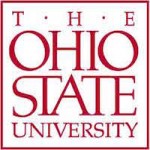 Le département de Français et Italien à l’Université de l’état de l’Ohio à Columbus offre des postes d’assistants aux meilleurs candidats pour son programme de doctorat en Langue, Littérature, Civilisation, et Film français et francophones (immatriculation : automne 2016). Le département de Français et Italien à l’Université de l’état de l’Ohio à Columbus offre des postes d’assistants aux meilleurs candidats pour son programme de doctorat en Langue, Littérature, Civilisation, et Film français et francophones (immatriculation : automne 2016).
Les candidats admis en programme de doctorat enseignent un cours de français au niveau débutant par semestre en échange de la prise en charge intégrale des frais de scolarité et d’un salaire mensuel d’environ $1 700 brut pour une durée de neuf mois. Le poste d’assistant est renouvelable jusque 4 ou 5 années en fonction des résultats obtenus dans le programme de doctorat.
Veuillez trouver une description complète de notre . . . → En lire plus
Posté par Sébastien Bontemps, le 6 juillet 2015;
- Date limite : 15 septembre 2015
- Date et lieu du colloque : 12-15 mai 2015, University of Western Michigan, Kalamazoo, USA
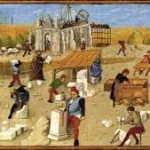 Session at 51. Int. Congress on Medieval Studies (Kalamazoo, 12-15 May 16) University of Western Michigan, Kalamazoo, MI (USA), May 12 – 15, 2016 Session at 51. Int. Congress on Medieval Studies (Kalamazoo, 12-15 May 16) University of Western Michigan, Kalamazoo, MI (USA), May 12 – 15, 2016
Deadline: Sep 15, 2015
New Perspectives on Medieval Rome (2 Sessions) Organizers: Marius B. Hauknes, Andrew W. Mellon Postdoctoral Fellow, Johns Hopkins University Alison Locke Perchuk, Assistant Professor of Art History, California State University Channel Islands Digital, environmental, material, Mediterranean, sensory, spatial: these are among the recent “turns” taken by the medieval humanities, including art history.
The new perspectives on the past opened by these approaches, many of which are informed by interdisciplinary research and contemporary cultural interests in the natural and built world, are fundamentally reshaping how we conceive of and study medieval art and . . . → En lire plus
Posté par Sébastien Bontemps, le 2 juillet 2015;
- Date limite : 1er novembre 2015
- Date et lieu de la journée d'étude : 31 mars 2016, University of Bristol
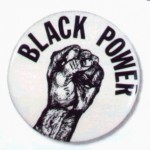 Framing the Critical Decade: After the Black Arts Movement (Bristol, 31 Mar 16) University of Bristol, UK, March 21, 2016 Deadline: Nov 1, 2015 University of Bristol in association with the Department of History of Art, the Transnational Modernisms Research Cluster and the Bristol Institute for Research in the Humanities and Arts Framing the Critical Decade: After the Black Arts Movement (Bristol, 31 Mar 16) University of Bristol, UK, March 21, 2016 Deadline: Nov 1, 2015 University of Bristol in association with the Department of History of Art, the Transnational Modernisms Research Cluster and the Bristol Institute for Research in the Humanities and Arts
‘It is simply too early to try to define the 1980s as a closed or finished period… It is still unresolved and very much ongoing.’ Kobena Mercer, ‘Iconography After Identity’ (2005) The Black Arts Movement was generated by the tumult of the 1980s – a decade defined as much by Thatcherism, civil unrest and race riots as by the rise of cultural theory and so-called ‘single issue’ social . . . → En lire plus
Posté par Sébastien Bontemps, le 2 juillet 2015;
- Date et lieu : 3 octobre 2015, Henry Moore Institute, Seminar Room, 74 The Headrow, Leeds
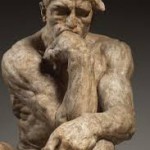 Object Lessons: Sculpture and the Production of Knowledge (Leeds, 3 Oct 15) Henry Moore Institute, Seminar Room, 74 The Headrow, Leeds LS1 3AH, UK, October 03, 2015 Object Lessons: Sculpture and the Production of Knowledge (Leeds, 3 Oct 15) Henry Moore Institute, Seminar Room, 74 The Headrow, Leeds LS1 3AH, UK, October 03, 2015
Programmed alongside the exhibition ‘Object Lessons’ in Gallery 4, this conference considers the relationship between sculpture and the production of knowledge in the nineteenth century. In the early nineteenth-century publications such as Elizabeth Mayo’s ‘Lessons on Objects’ (1830) (held in our Research Library collection) gained traction in Britain, North America and India as guides to an approach to education developed by Swiss educationalist Johann Heinrich Pestalozzi (1746-1827) that advocated exposure to concrete objects to develop abstract thought. The belief in the capacity of sculpture to produce and circulate knowledge was shaped by the . . . → En lire plus
Posté par Sébastien Bontemps, le 2 juillet 2015;
- Date et lieu du colloque : 17-18 septembre 2015, Amsterdam, Rijksmuseum / Trippenhuis
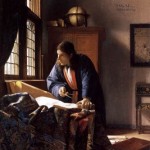 Art and Science in the Early Modern Low Countries (Amsterdam, 17-18 Sep 15) Rijksmuseum / Trippenhuis, Amsterdam, NL, September 17 – 18, 2015 Art and Science in the Early Modern Low Countries (Amsterdam, 17-18 Sep 15) Rijksmuseum / Trippenhuis, Amsterdam, NL, September 17 – 18, 2015
Registration deadline: Sep 14, 2015 On September 17 and 18, 2015, Amsterdam is to host the conference ‘Art and Science in the Early Modern Low Countries (ca 1560-1730)’, organized by the Rijksmuseum and the Huygens Institute for the History of the Netherlands.
Prior to the eighteenth century, ‘art’ and ‘science’ were often considered complementary, rather than opposite, expressions of human culture. They enlightened one another: through comparable curiosity, knowledge and observation of the world, but also in their resulting products: paintings, prints, books, maps, anatomical preservations, life casts, and many others. Scholars, craftsmen and artists often engaged . . . → En lire plus
Posté par Olivier Bonfait, le 30 juin 2015;
- Date limite : 15 aout 2015, 15 aout 2015
College Art Association Annual Conference, Washington DC, February (3 – 06, 2016) Deadline: Aug 15, 2015
New Perspectives on Art Nouveau and Fin-de-Siècle Design
From: Jessica M. Dandona <jdandona@mcad.edu> Date: Jun 25, 2015 Subject: CFP: New Perspectives on Art Nouveau and Fin-de-Siecle Design
New Perspectives on Art Nouveau and Fin-de-Siècle Design (Design Studies Forum Short Session)
Peter Clericuzio, The Wolfsonian–Florida International University, clericuz@gmail.com Jessica M. Dandona, Minneapolis College of Art and Design, jdandona@mcad.edu
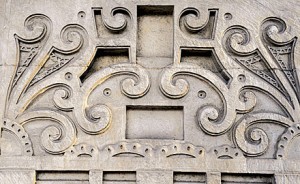 Much of our understanding of Art Nouveau rests on several well-known aspects of its history: its simultaneous appearance around 1890 in several renowned centers of Western art, its ties to nationalism, its complicated relationship with . . . → En lire plus Much of our understanding of Art Nouveau rests on several well-known aspects of its history: its simultaneous appearance around 1890 in several renowned centers of Western art, its ties to nationalism, its complicated relationship with . . . → En lire plus
Posté par Olivier Bonfait, le 26 juin 2015;
- Date limite : 19 juillet 2005
2 Promotionsstipendien, Universitaet Hamburg Application deadline: Jul 19, 2015
 The research group « Naturbilder/Images of Nature »—sponsored by the Alexander von Humboldt Foundation and hosted by the University of Hamburg under the leadership of Professor Frank Fehrenbach—is offering two predoctoral fellowships to students from disciplines related to the research group’s theme, especially art history, the history of science, cultural studies, and philosophy. The fellowships start from 1 October 2015. Applicants should have a dissertation topic relevant to the research group’s thematic spectrum, as well as a readiness for intellectual engagement in discussions and events. For more specific information about the research group, please see . . . → En lire plus The research group « Naturbilder/Images of Nature »—sponsored by the Alexander von Humboldt Foundation and hosted by the University of Hamburg under the leadership of Professor Frank Fehrenbach—is offering two predoctoral fellowships to students from disciplines related to the research group’s theme, especially art history, the history of science, cultural studies, and philosophy. The fellowships start from 1 October 2015. Applicants should have a dissertation topic relevant to the research group’s thematic spectrum, as well as a readiness for intellectual engagement in discussions and events. For more specific information about the research group, please see . . . → En lire plus
Posté par Sébastien Bontemps, le 1 juin 2015;
- Date et lieu du colloque : 15-16 juin 2015, Koninklijk Nederlands Instituut Rome (Roma, Via Omero 10/12); Svenska Institutet i Rom (Roma, via Omero 14)
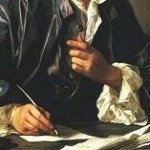 Artistic Correspondances (Rome, 15-16 Jun 15) Artistic Correspondances (Rome, 15-16 Jun 15)
Koninklijk Nederlands Instituut Rome / Svenska Institutet i Rom, Italy, June 15 – 16, 2015 Corrispondenze d’artista. Roma e l’Europa (XVIII-XIX secolo) – Artistic Correspondences. Rome and Europe in the 18th and 19th centuries.
International Conference KNIR, Koninklijk Nederlands Instituut Rome (Roma, Via Omero 10/12); Svenska Institutet i Rom (Roma, via Omero 14)
15 June 2015 – Svenska Institutet i Rom, Biblioteca
9.30 Saluti Martin Olin, Assistant Director, Svenska Institutet i Rom Mario De Nonno, Direttore del Dipartimento di Studi Umanistici, Università degli Studi Roma TRE Plenary Session: Session Chair Harald Hendrix, KNIR 10.00 Serenella Rolfi, Università degli Studi Roma TRE Linee di una ricerca 10.30 Elisabeth Oy-Marra, Gutenberg Universität Mainz Lettere d’artista e . . . → En lire plus
Posté par Sébastien Bontemps, le 29 mai 2015;
- Date et lieu de la journée d'étude : 22 juin 2015, Anvers, Rubenshuis
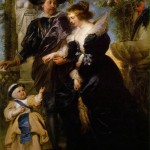 Likeness and Kinship. Artistic Families (Antwerp, 22 Jun 15) Rubenianum, Kolveniersstraat 20, 2000 Antwerp, Belgium, June 22, 2015 Likeness and Kinship. Artistic Families (Antwerp, 22 Jun 15) Rubenianum, Kolveniersstraat 20, 2000 Antwerp, Belgium, June 22, 2015
« Likeness and Kinship. Artistic Families from the Seventeenth Century Portrayed » Organized in conjunction with the exhibition ‘Rubens in private’ held at the Rubens House, this symposium aims to contextualize Rubens’s family portraits. The first two speakers will discuss and present research carried out for the exhibition. Two subsequent talks will address the differing character of family portraiture in the Northern and Southern Netherlands. The afternoon session will start with two presentations on the remarkable family portraits painted by Jacob Jordaens. Two final talks will look at the influence of Flemish painting on family portraiture further afield. The day will conclude . . . → En lire plus
Posté par Olivier Bonfait, le 28 mai 2015;
- Date et lieu de la rencontre : Fontainebleau, 30-31 mai
Venez au Festival d’histoire de l’art à Fontainebleau et pour être « in » , assistez au Festival off !
au bar Jet Lag, 7 rue Dénecourt en face du château
 Samedi 30 mai Samedi 30 mai
15h : Rembrandt oui Rembrandt non / Marie-Anne Dupuy ; Aude Prigot ; Grégoire Hallé ; Olivier Bonfait.
17h : L’embarras des richesses. Ensembles mobiliers et trésors nationaux en crise / animé par Didier Rykner.
Dimanche 31 mai
11h : Contre Poussin (tout contre) / Olivier Bonfait, Hubert Duchemin, Guillaume Kientz.
15h : AOC ou SARL ? Quels musées pour quels territoires ? : Olivia Voisin ; Thierry . . . → En lire plus
Posté par Sébastien Bontemps, le 26 mai 2015;
- Date limite : 3 août 2015
 Anonymous: The Void in Visual Culture (Fusion Journal) Anonymous: The Void in Visual Culture (Fusion Journal)
Deadline: Aug 3, 2015 Anonymous: The Void in Visual Culture (Fusion, Issue 9, 2016)
Editors: Dr Sam Bowker, Charles Sturt University & Professor Craig Bremner, Charles Sturt University
Ever since Vasari published the ‘Vite’ in 1550, art history has been skewed in favour of named individuals whose biographies can be unveiled or re-evaluated. However, the majority of contributions to visual culture do not fit this criterion. If it is impossible to determine an artists’ name, some of the most significant cultural and commercial imperatives for new scholarship are lost. Due to related methodological prejudices, analyses primarily drawn from material culture have been reserved for ‘inferior’ contributions to visual culture. The presentation of . . . → En lire plus
Posté par Sébastien Bontemps, le 26 mai 2015;
- Date et lieu du colloque : 8-9 juin 2015, Paris, INHA, Salle Vasari
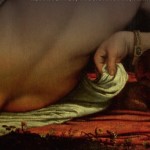 L’invention du geste amoureux a la Renaissance (Paris, 8-9 Jun 15) L’invention du geste amoureux a la Renaissance (Paris, 8-9 Jun 15)
INHA Paris, salle Vasari, 6 Rue des Petits Champs, 75002 Paris, 08. – 09.06.2015
L’invention du geste amoureux dans la peinture de la Renaissance (1500-1650). Résurgences, codifications, transgressions.
Colloque international organisé par Giovanni CARERI (EHESS), Elinor MYARA KELIF (UNIVERSITE PARIS-SORBONNE), Valérie BOUDIER (UNIVERSITE LILLE 3) et Elisa DE HALLEUX (UNIVERSITE PANTHEON SORBONNE) AVEC LA PARTICIPATION DE L’HICSA (Université Panthéon Sorbonne), DU CEHTA (Ecole des Hautes Etudes en Sciences Sociales), DU LABEX CAP (Université Panthéon Sorbonne) ET DU LABEX EHNE (Université Paris-Sorbonne)
LUNDI 8 JUIN Prototypes visuels, stéréotypes amoureux Présidence de séance : Michel Hochmann (EPHE)
9h30: Introduction par Giovanni Careri
10h00: Carmen Decu (Université de Genève) Aux frontières du . . . → En lire plus
Posté par ARIP, le 25 mai 2015;
- Date et lieu du séminaire : 2 juin 2015, Paris, INHA
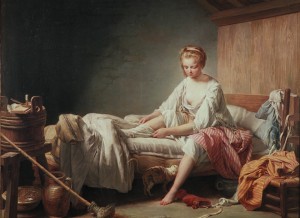 Nous avons le plaisir de vous convier à la dernière séance 2014-2015 du séminaire de l’Association de Recherche sur l’Image Photographique (ARIP). Nous avons le plaisir de vous convier à la dernière séance 2014-2015 du séminaire de l’Association de Recherche sur l’Image Photographique (ARIP).
Rendez-vous le mardi 2 juin de 18h à 20h à l’INHA (salle Jullian) 2 rue Vivienne, 75002 Paris
Nous aurons le plaisir de recevoir dans un premier temps Amandine Servais, jeune chercheuse à l’université de Liège, qui viendra présenter son projet de recherche autour du thème : L’histoire et ses marges : les récits photographiques d’Arlette Farge.
Au départ d’une étude de cas – certains travaux de l’historienne Arlette Farge – nous verrons comment l’image, en l’occurrence photographique, par les médiations qu’elle institue et les . . . → En lire plus
|
Équipe Rédacteur en chef : Olivier Bonfait.
Rédacteurs : Elliot Adam (Moyen Age) ; Nicolas Ballet (XX-XXIe siècles) ; Matthieu Fantoni (musées) ; Antonella Fenech Kroke (bourses) ; Vladimir Nestorov (Lettre mensuelle)
Administrateur web : Matthieu Lett.
ancien éditeur : Pascale Dubus
anciens rédacteurs : Gautier Anceau, Sébastien Bontemps, Damien Bril ; Sébastien Chauffour ; Ludovic Jouvet ; Aude Prigot
|
 Couleur x Afrique Institut national d’histoire de l’art (INHA), Paris, France, 19 février 2016
Couleur x Afrique Institut national d’histoire de l’art (INHA), Paris, France, 19 février 2016


















